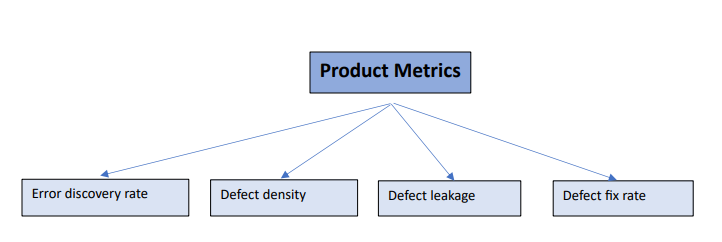Testing metrics play a crucial role in assessing the effectiveness and efficiency of the software quality assurance testing processes. By measuring various aspects of the testing effort, teams can gain valuable insights, identify areas for improvement and make informed decisions. In this blog post, we’ll delve into essential test metrics, providing formulas and insights to help you enhance your testing strategy.
Importance of Metrics in Software Quality Assurance Testing
Test metrics are essential in determining the software’s quality and performance. Developers should use the right software testing metrics to improve their productivity.
- Early problem identification: By measuring metrics such as defect density and defect arrival rate, testing teams can spot trends and patterns early in the development process.
- Allocation of resources: Metrics identify regions where testing efforts are most needed, which helps with resource allocation optimization. Ensuring testing resources are concentrated on important areas enhances the strategy for testing.
- Monitoring progress: Metrics are useful instruments for monitoring testing advancement. These metrics offer insight into the number of test cases that have been run, their completion rate and if the testing effort is proceeding according to plan.
- Continuous improvement: Metrics offer input on the testing procedure which helps to foster a culture of continuous development.
Types of Test Metrics
There are two types of metrics – process metrics and product metrics. These two types of testing work together to help us better understand the progress of the team’s work.

Now, let’s take a deeper dive into process metrics. As we see above, there are four types of process metrics and they can be used during the following phases:
- Test preparation
- Test execution
- Test reporting
- Test case: preparation productivity: Used to calculate the number of test cases prepared and the effort spent for the preparation of test cases.
Formula:

- Test case: execution productivity: Determines the number of test cases that can be executed per hour.
Formula:

- Test case: execution coverage: Used to measure the number of test cases executed against the number of test cases planned.
Formula:

- Test Cases: passed: Used to measure the percentage of test cases passed.
Formula:


Now, let’s take a deeper dive into product metrics. As we see above, there are four types of product metrics that are used during the defect analysis phase.
- Error discovery rate: Used to determine the effectiveness of the test cases.
Formula:

- Defect density: Defines the ratio of defects to the requirements.
Formula:

- Defect leakage: Used to review the efficiency of the testing process before user acceptance testing (UAT).
Formula:

- Defect fix rate: The build quality in terms of defect fixing.
Formula:

Takeaways
Utilizing test metrics is essential for continuous improvement in software testing. By understanding and applying these formulas, teams can gain valuable insights into the effectiveness of their testing efforts and make data-driven decisions to enhance overall software quality. Regularly monitoring these metrics will contribute to a more efficient and reliable software quality assurance testing process.
Author: Gokul Raj | [email protected]
Contact Us
For more information on this topic, please contact a member of Withum’s Digital Workplace Solutions Team today!



